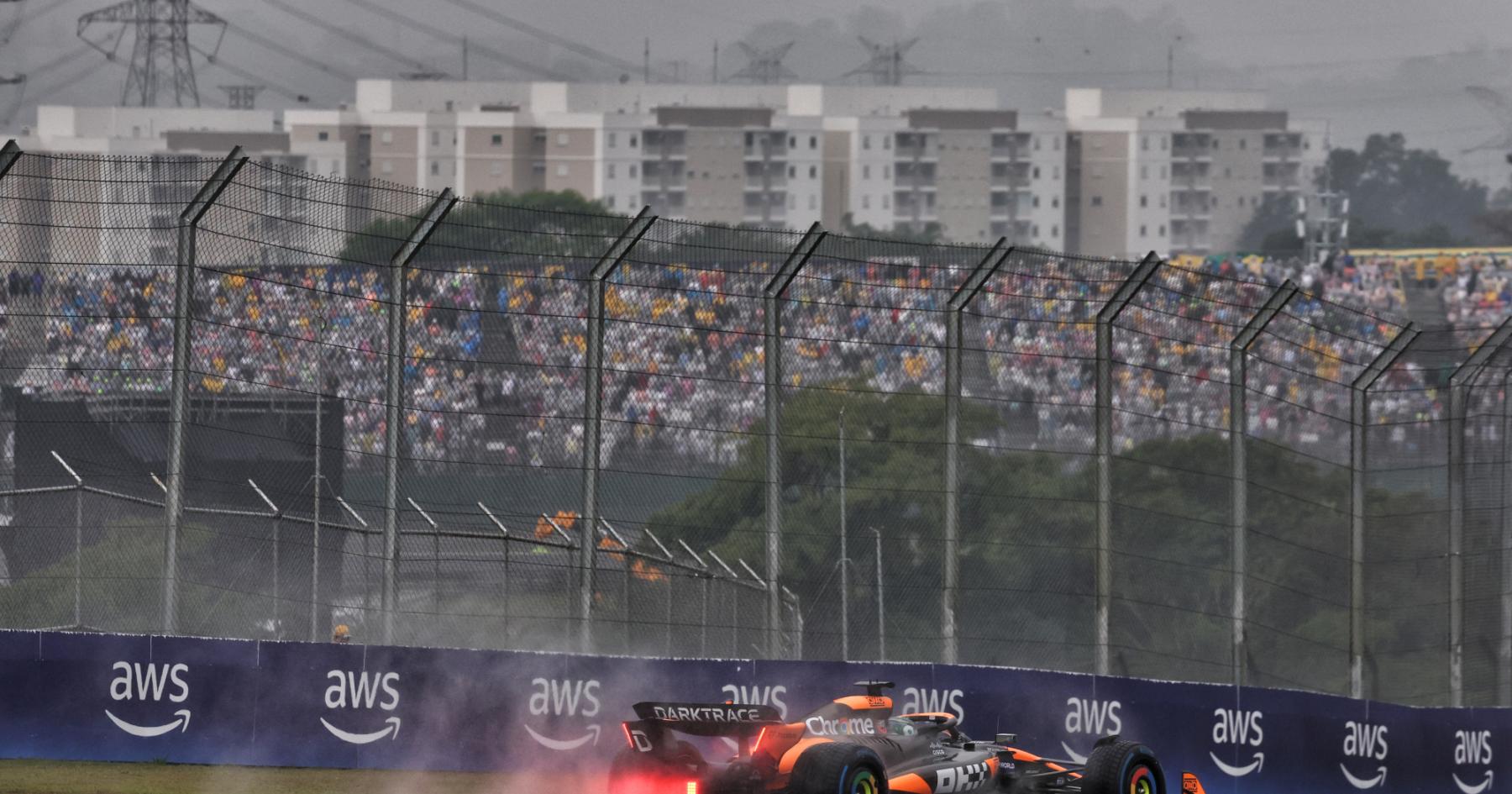The Brazilian Grand Prix weekend was marked by unexpected weather disruptions and procedural confusion, which began with heavy rain on Saturday that forced Formula 1 to reschedule the qualifying session to Sunday morning. This unusual doubleheader created a hectic start to race day, where damp conditions at the Interlagos track led to numerous incidents during qualifying.
Five red flags were issued as drivers struggled in the tricky conditions, causing damage to five cars. Despite the repairs made to four of the cars in time for the race, the No. 18 Aston Martin of Lance Stroll found trouble on the formation lap, where he veered off track into the gravel, leading to a series of chaotic events and an aborted start.
Stroll’s incident on the formation lap forced the race officials to cancel the initial start, which inadvertently caused further confusion among drivers. Polesitter Lando Norris, along with George Russell and Yuki Tsunoda, misunderstood the start lights, accelerating as the yellow lights turned off instead of waiting for the green signal.
This confusion led several drivers to mistakenly take off, while others stayed static on the grid, aware of the procedural rules that prevented them from completing an extra formation lap. The mix-up resulted in several drivers, including Norris, being flagged for potential breaches of start procedures, a critical issue given the high stakes in the championship standings.

After the race, the FIA spent hours reviewing the formation lap incidents involving Norris, Russell, Lawson, and Tsunoda. The stewards ultimately decided not to take any further action against Lawson and Tsunoda, as their premature starts were deemed influenced by the actions of the drivers in front of them, particularly Norris and Russell. The FIA’s ruling highlighted that Norris’s actions as the front-row driver had caused a chain reaction among those behind him, prompting the officials to issue fines and reprimands rather than more severe penalties.
The FIA’s formal statement clarified the sequence of events, citing that the Race Director had initiated an aborted start procedure due to Stroll’s stranded car on Turn 4. This directive was communicated to the teams, but Norris’s misinterpretation of the lights led him to move forward, thinking he was beginning an additional formation lap. The stewards noted that Norris’s position at the front of the grid influenced the drivers directly behind him, resulting in unintended non-compliance with the start procedures. Russell, who was also on the front row, was similarly fined for his role in triggering confusion among the following cars.
In the end, the stewards handed Norris and Russell €5,000 fines and issued reprimands, while Lawson and Tsunoda were cleared of further penalties. The ruling attributed the lapses to a breakdown in communication and procedural clarity, especially under the pressure of an unusual race weekend structure. All drivers and teams involved have the option to appeal these decisions, but for now, the FIA’s ruling effectively closes a chaotic chapter in the Brazilian Grand Prix weekend, underscoring the complexities of race management under unpredictable conditions.

